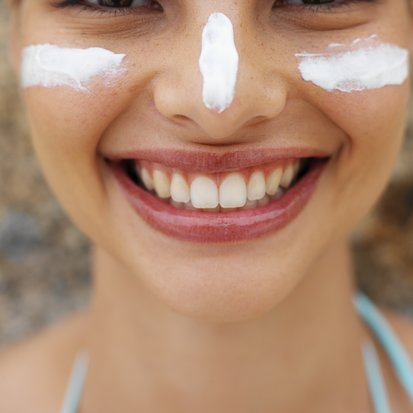
When skin is exposed to ultraviolet rays for years, developing actinic keratosis (also known as solar keratosis) is possible. It usually appears as a dry area on damaged skin, kind of scaly, and slightly discolored. Most people feel them before they see them because they are so small.
Symptoms
Actinic Keratosis usually appears as a small rough or flaky area on the skin that is somewhat discolored. It may be pink or brown, flat or slightly raised. Occasionally it can resemble a horn shape. They most commonly appear on the face, neck, ears, lips, hands, and scalp, although they can be anywhere. Many patients complain of itching or burning sensations but deny pain. They usually appear after the age of 40.
Causes
Sun lamps and tanning beds may increase the incidence of actinic keratosis, as does frequent unprotected sun exposure. Fair-skinned people are at a higher risk, as are those with a compromised immune system, but everyone exposed has some risk. People who have experienced severe sunburns in the past are at high risk for developing these lesions. Those who work with coal or tar products, such as road workers or roofers, also have a higher exposure because the material contains polycyclic aromatic hydrocarbons, a known cause of the condition.
Concerns
These lesions can disappear and reappear later. This may indicate they are growing deeper rather than resolving on their own. This is a repetitive scenario; they appear after sun exposure, flake off and go away, then reappear later on.
Although not all actinic keratosis will become cancerous, many scientists and dermatologists refer to them as precancerous lesions. Statistics show that 10 percent convert to squamous cell carcinomas and up to 10 percent of those advance to life-threatening lesions that affect internal organs. This is easily avoided with early diagnosis and treatment.
Diagnosis and Treatment
Many times a dermatologist can identify the lesions by site; however, most physicians will perform a skin biopsy for examination to eliminate any further concerns.
Sunscreen is the first step in treating actinic keratosis. It can prevent the exacerbation of current lesions and reduce the risk of developing more. Other treatments include topical medications applied directly to the affected areas after the lesion is removed. Photodynamic therapy or laser therapy is another available method, or surgery may be necessary in advanced cases.
Cryotherapy uses liquid nitrogen to freeze the skin, causing the lesion to slough off. Cutterage involves scraping the lesion off, and it is usually followed by electrosurgery to ensure all the cells are obliterated. Both of these procedures can be performed at the doctor’s office and may leave scars or discolored skin areas.
Prevention
Sunblock, keeping the skin covered, or staying out of the sun will help prevent actinic keratosis from developing. When a patch is discovered, prompt evaluation is recommended, as early treatment prevents serious consequences.
